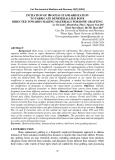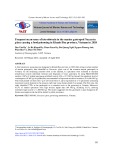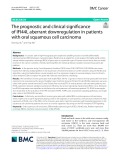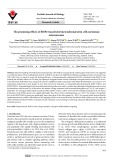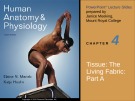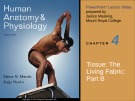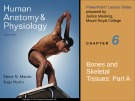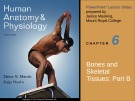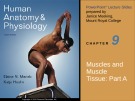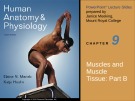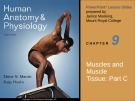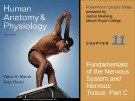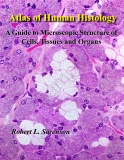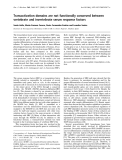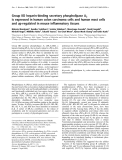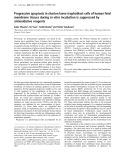
Human tissue
-
Bone tissue, a vital component for self-healing. This inherent regenerative capacity enables bones to repair themselves following injury or damage. Initially, standardizing an efficient procedure to obtain demineralized bone sources from human skull fragments from three different inclusion methods.
 7p
7p  vinatisu
vinatisu
 29-08-2024
29-08-2024
 0
0
 0
0
 Download
Download
-
The result pointed out that only 5 g of soft tissue from N. glans (equivalent to 2–3 specimens) containing maximum toxicity detected in the present study may cause human death if consumed. Fhe first time, this study identified TTXs in the gastropods as a causative toxin in the poisoning in Vietnam. Moreover, 65.5% of studied specimens with high toxicity higher than 100 MU/g, including 16.1%, showing extremely high toxicity (> 1,000 MU/g). The results suggested that this gastropod is quite dangerous for human consumption and should be alerted to public awareness.
 6p
6p  dianmotminh02
dianmotminh02
 03-05-2024
03-05-2024
 7
7
 1
1
 Download
Download
-
It is a basic task in high-throughput gene expression profiling studies to identify differentially expressed genes (DEGs) between two phenotypes. RankComp, an algorithm, could analyze the highly stable withinsample relative expression orderings (REOs) of gene pairs in a particular type of human normal tissue that are widely reversed in the cancer condition, thereby detecting DEGs for individual disease samples measured by a particular platform.
 11p
11p  vielonmusk
vielonmusk
 21-01-2022
21-01-2022
 14
14
 1
1
 Download
Download
-
Hepatocellular carcinoma (HCC) is one of the deadliest cancers. Research on HCC so far primarily focused on genes and provided limited information on genomic repeats, which constitute more than half of the human genome and contribute to genomic stability. In line with this, repeat dysregulation was significantly shown to be pathological in various cancers and other diseases. In this study, we aimed to determine the full repeat expression profile of HCC for the first time.
 14p
14p  thiencuuchu
thiencuuchu
 27-11-2021
27-11-2021
 21
21
 3
3
 Download
Download
-
The osteogenic differentiation markers BMP2, BMP4, COL1A1, OPN, OCN and PF4 evaluated using RT-PCR. The tumor dimensions in the hMSCs group were significantly higher than those of the remaining groups (p < 0.01). The number of metastatic foci in the BMP2+hMSCs group was significantly lower than those of the other groups (p < 0.01). The current results showed that the intraperitoneal route could be efficiently used for targeting hMSCs to the tumoral tissues for effective BMP2 delivery.
 13p
13p  thiencuuchu
thiencuuchu
 27-11-2021
27-11-2021
 15
15
 1
1
 Download
Download
-
This chapter list the steps involved in preparing animal tissue for microscopic viewing; list several structural and functional characteristics of epithelial tissue; name, classify, and describe the various types of epithelia, and indicate their chief function(s) and location(s).
 29p
29p  tangtuy07
tangtuy07
 02-04-2016
02-04-2016
 45
45
 3
3
 Download
Download
-
Connective tissue is the most abundant and widely distributed of the primary tissues, but its amount in particular organs varies. For example, skin consists primarily of connective tissue, while the brain contains very little. This chapter provides knowledge of connective tissue, indicate common characteristics of connective tissue, and list and describe its structural elements.
 48p
48p  tangtuy07
tangtuy07
 02-04-2016
02-04-2016
 40
40
 2
2
 Download
Download
-
Lecture Human anatomy and physiology - Chapter 6: Bones and skeletal tissues (part a). When you finish this chapter, you should: Describe the functional properties of the three types of cartilage tissue, locate the major cartilages of the adult skeleton, explain how cartilage grows, name the major regions of the skeleton and describe their relative functions, compare and contrast the four bone classes and provide examples of each class,...
 41p
41p  tangtuy07
tangtuy07
 02-04-2016
02-04-2016
 46
46
 3
3
 Download
Download
-
Chapter 6: Bones and skeletal tissues (part b) provides knowledge of bone development, bone homeostasis, homeostatic imbalances of bone and developmental aspects of bones. After completing this chapter, students will be able to: Compare and contrast intramembranous ossification and endochondral ossification, describe the process of long bone growth that occurs at the epiphyseal plates,...and other contents.
 53p
53p  tangtuy07
tangtuy07
 02-04-2016
02-04-2016
 37
37
 3
3
 Download
Download
-
Chapter 9 - Muscles and muscle tissue (part a) provides knowledge of muscle tissues and skeletal muscle. The following will be discussed in this chapter: Types of muscle tissue, special characteristics of muscle tissue, muscle functions, gross anatomy of a skeletal muscle, microscopic anatomy of a skeletal muscle fiber, sliding filament model of contraction, physiology of skeletal muscle fibers,...
 65p
65p  tangtuy07
tangtuy07
 02-04-2016
02-04-2016
 59
59
 3
3
 Download
Download
-
This chapter presents the following content: Gross anatomy of a skeletal muscle, microscopic anatomy of a skeletal muscle fiber, sliding filament model of contraction, physiology of skeletal muscle fibers, contraction of a skeletal muscle, muscle metabolism, force of muscle contraction, velocity and duration of contraction, adaptations to exercise.
 42p
42p  tangtuy07
tangtuy07
 02-04-2016
02-04-2016
 54
54
 3
3
 Download
Download
-
The main contents of this chapter include all of the following: Force of muscle contraction, avelocity and duration of contraction, muscle fiber type, effects of exercise, effects of resistance exercise, the overload principle, smooth muscle, peristalsis, microscopic structure, innervation of smooth muscle,...and other contents.
 47p
47p  tangtuy07
tangtuy07
 02-04-2016
02-04-2016
 40
40
 4
4
 Download
Download
-
This chapter students will be able to: List the basic functions of the nervous system; explain the structural and functional divisions of the nervous system; list the types of neuroglia and cite their functions; define neuron, describe its important structural components, and relate each to a functional role;...
 47p
47p  tangtuy07
tangtuy07
 02-04-2016
02-04-2016
 46
46
 2
2
 Download
Download
-
Chapter 11 - Fundamentals of the nervous system and nervous tissue (part b). In this chapter, you will learn: Define resting membrane potential and describe its electrochemical basis, compare and contrast graded potentials and action potentials, explain how action potentials are generated and propagated along neurons,...
 55p
55p  tangtuy07
tangtuy07
 02-04-2016
02-04-2016
 42
42
 2
2
 Download
Download
-
In this chapter, students will be able to understand: Define synapse, distinguish between electrical and chemical synapses by structure and by the way they transmit information, distinguish between excitatory and inhibitory postsynaptic potentials, describe how synaptic events are integrated and modified,...
 80p
80p  tangtuy07
tangtuy07
 02-04-2016
02-04-2016
 31
31
 2
2
 Download
Download
-
This atlas provides medical, dental and biology students with an outstanding collection of histology images for all of the major tissues and organs. Microscope slides are shown as a series of high-resolution photographs of the same area at successively increasing magnifications to provide a sense of scale and proportion. This is exactly the way students examine specimens through an actual microscope. Each image is labeled with details a student should be able to recognize. Each chapter is prefaced with introductory text.
 0p
0p  phankimhun
phankimhun
 15-11-2014
15-11-2014
 62
62
 8
8
 Download
Download
-
The human b-globin gene locus is the subject of intense study, and over the past two decades a wealth of information has accumulated on how tissue-specific and stage-specific expression of its genes is achieved. The data are extensive and it would be difficult, if not impossible, to formulate a comprehensive model integrating every aspect of what is currently known. In this review, we introduce the fundamental characteristics of globin locus regulation as well as questions on which much of the current research is predicated.
 11p
11p  system191
system191
 01-06-2013
01-06-2013
 47
47
 4
4
 Download
Download
-
The transcription factor serum response factor (SRF) regulates expression of growth factor-dependent genes and muscle-specific genes in vertebrates. Homologous factors regulate differentiation of some ectodermic tissues in invertebrates. To explore the molecular basis of these different physiological functions, the functionality of human, Drosophila melanogaster and Artemia franciscana SRFs in mammalian cells has been compared in this article. D. melanogaster and, to a lesser extend, A.
 9p
9p  system191
system191
 01-06-2013
01-06-2013
 32
32
 5
5
 Download
Download
-
Group IID secretory phospholipase A2 (sPLA2-IID), a heparin-binding sPLA2 that is closely related to sPLA2-IIA, augments stimulus-induced cellular arachidonate release in a manner similar to sPLA2-IIA. Here we identified the residues of sPLA2-IID that are responsible for heparanoid binding, are and therefore essential for cellular function.
 10p
10p  system191
system191
 01-06-2013
01-06-2013
 36
36
 5
5
 Download
Download
-
Previously, we demonstrated apoptotic cell death in the chorion laeve trophoblast layer of human fetal membrane tissues during the late stages of pregnancy, the progression of apoptosis during incubation in vitro, and its suppression by a low concentration of glucocorticoid hormones.
 8p
8p  system191
system191
 01-06-2013
01-06-2013
 33
33
 5
5
 Download
Download
CHỦ ĐỀ BẠN MUỐN TÌM








